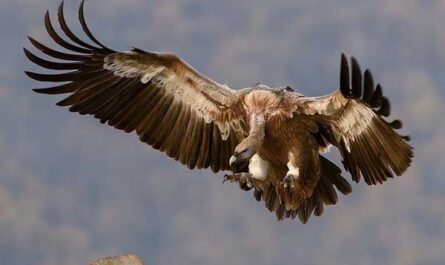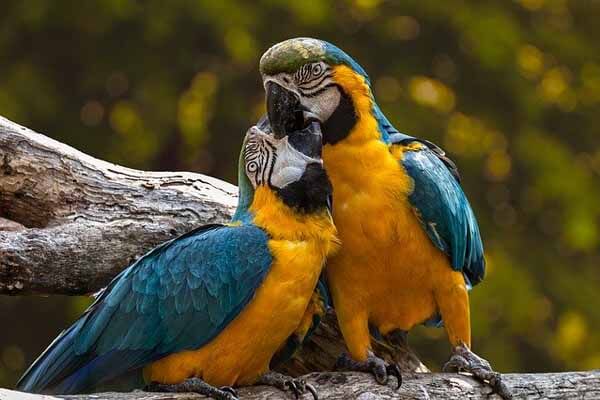Gnu is the most famous type of antelope. In nature, there are 2 species of these hoofed animals – blue, or striped gnu and white-tailed gnu. They differ only in the details of coloring.
The appearance of these animals is very unusual, not without reason they are isolated in a special subfamily of cow antelopes. At the first glance at the Antelope gnu, it gives the impression of a bull: large size (height in the crest can reach 140 cm, and the average weight of Antelopes gnu is 200-250 kg), a massive head with a heavy face and short, steeply bent horns suggest that we are looking at cattle. But thin, high legs and light, rapid canter indicate that we are looking at the antelope. In appearance, the antelope has many other absurdities: on the underside of his face and neck he has a thick suspension of hair like a mountain goat, on the crest of the neck there is a rare mane like a horse, the tail is thin with a bundle of long hair at the end like a donkey, and the voice is like a jerky and disgusting mooing cow. It seems as if this antelope was collected from the details of different animals. The color of the blue bug is dark gray with indistinguishable transverse stripes on the torso. This species has a subspecies of white beard bug, which has white hair on the neck. The white-tailed gnu is almost black with a white and thick tail, outwardly this species is very similar to the horned horse.
Both species inhabit the grassy plains of Africa, only the blue bug is found everywhere, remaining the most numerous ungulates in Africa, and the number of white-tailed Gnu is low and it is preserved only in a few national parks. The gnu is characterized by rare territoriality for herbivorous animals: each herd has an area, which the leader marks and protects from neighbors. These animals specialize in grass nutrition and are very dependent on rainy seasons and drought. Therefore, they are forced to migrate twice a year: first to the north, and then back to the south following the rains. During migration, the bending is brought down into colossal herds of several tens of thousands of individuals. Usually in the herd animals do not move heap, but in separate scattered groups, so the herd stretches for tens of kilometers on the plain. A special problem for migratory animals is rivers. No, the rivers in Africa are not wide and not deep, but crocodiles are waiting for migrating antelopes. And they know it. Approaching the river, antelopes accumulate on its banks without daring to continue moving. Tense silence, like a calm before the fight, makes the animals nervous.
But, unfortunately, this is just an optimistic scenario. Sometimes, it happens that the daredevil is not there, and then the animals arriving from behind just push the front from the shore. In this case, there is a crush and gnus just trample on the weaker brothers. After crossing the river on its banks there are hundreds of mutilated bodies, undone by crocodiles. Vultures, jackals, hyenas, and marabou quickly dispose of this scoundrel.
The nature of these animals under their appearance is paradoxical. Most of the time, the gnu behaves like a typical cow, melancholy grazing, or chewing gum, but sometimes they find a sudden panic attack, and the herd breaks into a gallop. And sometimes they do it for no apparent reason. On the one hand, bending, like all hoofed animals, is defenseless before the attack of predators, on the other hand, they can show unexpected courage. Rapid bent can attack the surrounding animals on their whims. It is not without reason that in the zoos the employees are obliged to apply more precautions to these animals than even to the buffalos.
Next year, the females bring one brown-colored calf. It comes into the world quite developed and in 20 minutes it rises to its feet, and in 30-40 it can run! But despite this jump, many calves die in the teeth of predators.
Gnus has many enemies: together with zebras, they form the basis of the diet of lions, hyenas. Young biting can be attacked by leopards and cheetahs. Many of them die at crossings and in the teeth of crocodiles. During an attack of predators, the gnus are not knocked down in a pile and scatter in all directions. This allows you to disorient the predators and buy time. At close contact, they are protected by kicking and waking, there are cases where the temperamental bent managed to repel the attack of lions. In the past, these antelopes were used for mass hunting, and as a result, the number of white-tailed gnus has not yet recovered.
The Gnu Antelope
The gnu is one of the largest antelopes in the world, weighing between 260 and 595 pounds. There are two species, the blue wildebeest and the black wildebeest. The blue wildebeest weighs about 115 kilograms (250 lbs), and grows to be about four feet long. The black wildebeest, also known as the white-tailed gnu, weighs 242 to 346 pounds and grows to be between 6.5 feet and 2 meters in length. The gnu is a large animal with a thick, brown-black coat.
The gnu is one of the largest animals in Africa. Both male and female gnus have curved horns and are characterized by a striped pattern on their body. They belong to the Bovidae family, along with sheep, goats, and antelopes. The gnu evolved in the African plains about 1 million years ago and is related to both cattle and goats.
The gnu’s range is the same as the sable antelope’s range. It is darker in color than its female counterpart. The gnu makes many different noises, including whistles when they are distressed, snorts when they’re in danger, and whistling while hunting. The blue wildebeest is also known as the brindled gnu and the white-bearded genus. The gnu has a long and rounded tail, a thin, muscular body, and a bushy beard.
The black wildebeest is a larger species of antelopes, weighing between 155 and 180 kilograms. The blue wildebeest has curved horns and weighs between 165 and 200 kilograms. Both species are members of the Bovidae family, which also includes sheep, goats, antelopes, and cattle. Moreover, fossil records suggest that these two species diverged over a million years ago.
The gnu is the largest antelope species in Africa. The striped gnu is a smaller version. The white-bearded gnu is the largest of the two. The striped fawn is a regal antelope. The blue wildebeest is a larger, lighter species. Its tail is long and has a black tuft of fur on its head and neck.
The gnu is one of the largest antelope species in Africa. The male gnu weighs about 150 kilograms and has a long, curved tail. Its horns are asymmetrical, making it easy to distinguish them from other antelopes. While they may appear similar to sheep and cattle, the gnu has more distinct characteristics. A horn is a distinctive characteristic of the genus.
While the gnu is the largest of the antelope species, the blue gnu has a much darker color than the black wildebeest. The male of the blue gnu has curved horns, while the blue gnu is gray. Despite their size and shape, both species are closely related to sheep and cattle. The striped gnu is the largest of the two, and it weighs between 155 and 180 kilograms.
The gnu is a large African antelope, and its name is pronounced like news. They are related to goats, cattle, and antelopes. The gnu has a thick mane, which is a distinguishing feature of this antelope. This antelope is similar to the blue zebra and weighs between 155 and 180 kilograms.
The gnu is the most popular type of antelope. There are two species: the blue gnu and the white-tailed gnu. The white gnu is the most common and is found in Africa. It is more than two hundred and fifty kilograms. The striped antelope is the largest of the gnu species, so it is not unusual for the female to weigh more than double the male.
The largest of the antelopes is the Giant Eland, which can weigh up to 2,200 pounds. This animal is known for its large horns, which spiral upwards in a v-shape. Its male horns grow to be four feet long and two-foot-long. The females grow to about two and a half feet tall. Its horns are the largest of all antelopes.
The Gnu is one of the largest antelopes in Africa. Its humped shoulders, short legs, and thick tail make it a formidable opponent. But, despite its large size, the Gnu is a gentle animal. The gnu is one of the most peaceful and most common antelopes in the world. They are public and peaceful, but they are frightened of humans.








